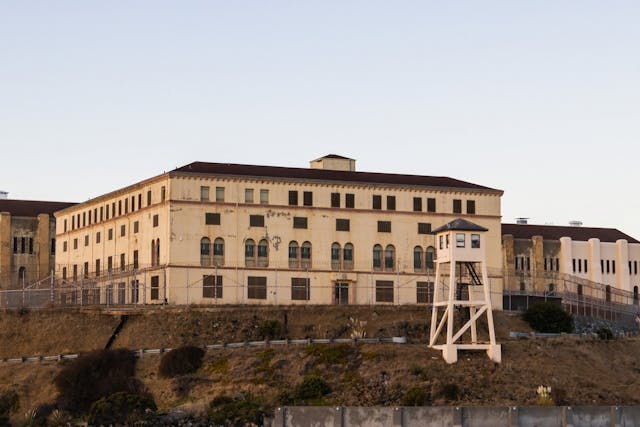
by Jason Tarnow | Apr 1, 2022 | Crime, Criminal Attorney
Systemic racism is alive and well in the Canadian judicial system. A refreshed approach to sentencing is long over due.

Bill C-5 seeks to do just that – by repealing Mandatory Minimum Penalties (“MMP”) for 14 offences in the Criminal Code, and all six MMP’s in the Controlled Drug and Substances Act. Statistics demonstrate that MMP’s disproportionately effect Canadians of color – specifically, Indigenous and Black Canadians.
Two important factors to consider:
Overincarceration rates
Data on this issue was collected by the Government of Canada for the periods of 2007-2008 and 2016-2017. The information compiled desmonsrates that Indigenous and Black offenders were most likely to be admitted to the Federal correctional system for an offence attached to a mandatory minimum sentence.
Judicial discretion in sentencing
Mandatory minimum penalties eliminate a Judge’s ability to sentence an offender while considering their unique circumstances. In cases where a mandatory minimum punishment is the best an Accused can hope for, there is little reason for the Accused to make any meaningful effort to mitigate the damage. When a custodial sentence is imminent, the feeling of having “nothing left to lose” can take over. Any incentive for an Accused to plead guilty to an offence carrying an MMP, when their efforts for rehabilitation have no influence on the Judge’s ability to impose a just and fair sentence.

Reforms to the MMP provisions of the Criminal Code and CDSA are specific to the following offences:
Criminal Code:
1. Using a firearm or imitation firearm in commission of offence (two separate offences)
2. Possession of firearm or weapon knowing its possession is unauthorized (two separate offences)
3. Possession of prohibited or restricted firearm with ammunition
4. Possession of weapon obtained by commission of offence
5. Weapons trafficking (excluding firearms and ammunition)
6. Possession for purpose of weapons trafficking (excluding firearms and ammunition)
7. Importing or exporting knowing it is unauthorized
8. Discharging firearm with intent
9. Discharging firearm — recklessness
10. Robbery with a firearm
11. Extortion with a firearm
12. Selling, etc., of tobacco products and raw leaf tobacco
Controlled Drugs and Substances Act:
1. Trafficking or possession for the purpose of trafficking (two separate offences)
2. Importing and exporting or possession for the purpose of exporting (two separate offences)
3. Production of substance Schedule I or II (two offence)
Mandatory Minimum Punishments will remain in effect within the Criminal Code for other offences to which MMP’s apply.
It is important to note that the Judge can still impose a period of incarceration for any of the offences mentioned above – they simply will no longer be bound by legislation to impose a specific period of jail.
As we’ve seen with other aspects of Canadian criminal law, a “one size fits all” approach is rarely just. Sadly, these legislative amendments will do nothing to address the current rate of overincarceration of Indigenous and Black Canadians. For them, it is too little, too late.
If you have been charged with a criminal offence, it is important that you speak to experienced defence counsel without delay. Our office skillfully handles both summary and indictable offences, ranging from assault, mischief, criminal harassment and impaired driving, to sexual assault, murder, robbery, unlawful confinement, and everything in between. We are licensed to practice in British Columbia, and work in the Lower Mainland and Greater Vancouver Area including, but not limited to Richmond, Vancouver, Surrey, Ladner, Burnaby, Port Coquitlam, New Westminster and Langley, and in the Fraser Valley, including, but not limited to Abbotsford , Chilliwack, Hope, Mission and Agassiz. We are also licensed to practice in the Yukon Territory and frequently accept clients in Whitehorse, Dawson City, Old Crow, Mayo, Haines Junction, and Faro.
by Jason Tarnow | Oct 16, 2020 | Crime, Legal Aid, Legal Rights, Media, Social Media
As we’ve spoken about in previous posts, overrepresentation of Indigenous offenders in the Canadian Correctional System is both disturbing and rampant – making up approximately 30% of all inmates – despite accounting for only 5% of Canada’s population. Within the past decade, the Courts have recognized that this overrepresentation encompasses many factors – including the historical discrimination of Indigenous people in the judicial system.

Back in 1999, the decision of R. v. Gladue by the Supreme Court of Canada served as confirmation that the circumstances of Indigenous offenders are unique, and must be taken into consideration when the Court contemplates the issues of bail and sentencing. This jurisprudence was reaffirmed by the Supreme Court of Canada in the case of R. v. Ipeelee in 2012.
The preparation of a Gladue Report requires a thorough review of the facts of the case and the personal history and circumstances of the Accused, coupled with their Aboriginal heritage, and how the former is influenced by the latter. The assessment of these elements and the authoring of the report must be completed by an individual who is educated and intimately informed of the special challenges that Indigenous people face in the judicial system. These reports are commonly ordered by Courts all across Canada – with the exception of Nunavut, where a Gladue report has never been tendered in Court.
Criminal defence counsel in Iqaluit, Nunavut (where 85.9% of the population identifies as Indigenous) recently requested that the Court Order a Gladue Report for an Indigenous offender whose case is proceeding to sentencing. The presiding Judge, Chief Justice Neil Sharkey, declined to do so – explaining that there are no Gladue Report writers in the Territory. Although there are Writers available in the South (we commonly engage their services for clients in Richmond, Surrey, Port Coquitlam and many other jurisdictions in the Greater Vancouver Area, in addition to Whitehorse, Dawson City, Yellowknife and other communities in the Yukon and Northwest Territories) Chief Justice Sharkey opined that these Writers are not familiar with the Inuit community, as they only author reports for First Nations and Métis offenders. The Court went on to explain that the Accused should not face further delay while awaiting the preparation of a Gladue Report. While it is true that the Government of Nunavut has not created a program within the Territory that trains and employs individuals qualified to prepare Gladue Reports, it is also true that a push to create such a program has never been prioritized. Experienced criminal defence counsel will always advocate for Gladue Reports where they are applicable, as we are well apprised of the value they provide not only to the Accused, but to the Courts and all those who are effected by their proceedings. And while the production of a Gladue Report can certainly cause delay in the case proceeding to sentencing, its influence on the Court could result in a lesser sentence, nullifying any delay created during its production.

The irony lays in the fact that R. v. Ipeelee – the case to reaffirm the Court’s obligation to take judicial notice of the unique circumstances of Indigenous offenders and the importance of Gladue considerations – involves an Indigenous person from none other than Iqaluit, Nunavut. The case was heard before the Supreme Court of Canada on October 17, 2011 – almost exactly 9 years prior to the date of this post.
It is not the sort of irony that leaves you in awe of such a coincidence – rather, it is the kind that leaves you wondering: if the decisions of highest Court in Canada, the loudest and most authoritative body of our legal system, cannot provide a voice to those who need it most….who can?
by Jason Tarnow | Oct 2, 2020 | Crime, Legal Rights, Media, Police, Politics, Wheels Of Justice
Whenever incidents relating to terrorism in Canada hit the news, the eyes of Canadians widen with revolt. Recent headlines elicited a similar response, with a healthy dose of confusion and curiosity added to the mix.

On September 21, 2020, criminal charges were announced against 25 year old Ontario resident Shehroze Chaudhry – but not due to allegations of committing acts of terrorism. Rather, Chaudhry has been charged under Section 83.231(1) of the Criminal Code – perpetrating a hoax regarding terrorist activity:
83.231 (1) Every one commits an offence who, without lawful excuse and with intent to cause any person to fear death, bodily harm, substantial damage to property or serious interference with the lawful use or operation of property:
(a) conveys or causes or procures to be conveyed information that, in all the circumstances, is likely to cause a reasonable apprehension that terrorist activity is occurring or will occur, without believing the information to be true; or
(b) commits an act that, in all the circumstances, is likely to cause a reasonable apprehension that terrorist activity is occurring or will occur, without believing that such activity is occurring or will occur.

Chaudhry was a frequent guest on an award winning New York Times podcast known as “Caliphate”. He spoke, in gruesome detail, of his time as an ISIS executioner in Syria, among other things. But the charges levelled against him assert that his personal experiences as an ISIS soldier are fabricated.
While the NYT claimed to have verified his role in ISIS, he gave conflicting accounts to CBC, even going so far as to say he would take a polygraph to prove he had never killed anyone. He likely thought this would absolve him any criminal liability relating to terrorism offences in Canada, but the charges against him refute this misconception.
The details released from the police don’t specify if any other person was harmed or killed due to the alleged yarn by Chaudhry, but they will play a determinative role if he is convicted. The sentences range from a fine and imprisonment in a provincial correctional institution if prosecuted summarily, to life imprisonment should Crown proceed by indictment.
Chaudhry’s case demonstrates that Canadian jurisprudence condemns all activity relating to terrorism – whether it’s the real deal or not.
by Jason Tarnow | Sep 11, 2020 | Crime, Media, Wheels Of Justice
It has been six years since Matthew de Grood was charged with the murders of five young people at a house party in Calgary, Alberta, and four years since he was found to be Not Criminally Responsible for those offences.
It was concluded that de Grood was suffering from delusions, attributed to undiagnosed schizophrenia, when he caused the deaths of five schoolmates from a local university. He has been in a secure psychiatric facility ever since.
As we have discussed in previous posts, a finding of NCR is neither a determination of guilt, nor an acquittal. It is the beginning of alternative proceedings, which ultimately seek to determine if/when an Accused person can be released back into the community. Like all individuals found NCR, de Grood is required to appear before the Review Board to assess his progress, and to evaluate what freedoms, if any, he may be granted as a result of said progress.

Back in 2016, the Crown suggested it would be making an Application to seek a “High Risk NCR” designation for de Grood. Had this designation been imposed, his appearance before the Review Board would have been extended to take place every three years instead of annually. However – it appears that the Application was never made. This was likely due to the fact that the relevant legislation – the Not Criminally Responsible Reform Act – did not go into force until July 11, 2014, nearly 3 months after the offences took place. As such, the law could not be retroactively applied to de Grood’s case.
At his recent hearing, de Grood’s counsel spoke of the progress he has made during his time at the psychiatric facility. He has been afforded the opportunity to spend the night at his parent’s home on several occasions, taking hospital transportation to and from medical appointments, and volunteering with Meals on Wheels. His counsel submits that de Grood should be granted an absolute discharge due, in part, to the progress he has made with his mental health issues, including being cooperative with taking his medication – and recognizing the devastating consequences that would come as a result of not taking it. He has also demonstrated a high level of remorse for his actions.

Defence counsel further acknowledged that de Grood’s case is extremely high profile. There are concerns regarding the public’s reaction to seeing him on public transit, and how he may face serious adversity in transitioning to a group home.
The Review Board reserved its decision, and accordingly, de Grood remains in a psychiatric facility with heavy restrictions on his freedoms.
by Jason Tarnow | Jul 2, 2020 | Crime, Criminal Attorney, Legal Rights, Media, Police, Riots, Social Media, Wheels Of Justice
Over the last couple of months, there has been outcry from the public urging the use of BWC’s (Body Worn Cameras) for Canadian law enforcement. Although initially in response to the growing unrest relating to police brutality in the United States, there are echoes of abandoned intentions from Canadian officials dating back at least a few years.
Back in 2015, the Office of the Privacy Commissioner of Canada (“OPCC”) issued a publication regarding the use of BWC by police, in collaboration with privacy agencies in Alberta, New Brunswick and Quebec. The remaining Canadian law enforcement agencies from other provinces and territories acted “in consultation”.
For reference: according to the CBC, there were a total of 2 incidents involving the death of individuals at the hands of law enforcement in New Brunswick between 2012 and 2014, 12 incidents in Quebec, and 14 incidents in Alberta. Interestingly enough, British Columbia (on par with Quebec at 14 deaths) and Ontario (with the highest rate of police violence resulting in death in the country at 25 deaths between 2012 and 2014) were only acting in consultation.
The report hails the effectiveness of BWC to capture high quality images, videos, and audio recordings – so effective, in fact, that the OPCC had grave concerns regarding their ability to capture material that could jeopardize the privacy of innocent and uninvolved bystanders.

The report goes on to tout the value of BWC for evidentiary purposes, including analytics so sophisticated that the material obtained would likely be suitable for biometric comparison – aka, facial recognition.
There is no arguing the fact that the use of BWC by police has implications for the privacy of citizens in their everyday lives – especially since once fitted, citizens would likely expect on-duty officers to have their devices on a continuous basis as opposed to intermittently.
Benefits of BWC include the ability to review interactions between police and the public, recording communications between the police and suspects in the course of an investigation, identifying potential witnesses, and of course recording interactions between police officers. Many criminal cases involve evidence obtained through the use of dash cams, which provide audio from inside a police cruiser and video from the perspective of the driver. The effectiveness of this technology loses value when the investigation takes place outside of a police vehicle, as the audio often fails to capture intelligible communications between police and a suspect, or between officers themselves. Although the dash cam is kept running, the audio portion is often useless when the interactions between police and a suspect take place outside the vehicle, and the windows of the police cruiser are closed, or if the police/suspect leave the immediate area where the audio is successfully captured.
The report indicates that while continuous recording would undoubtedly provide a greater level of accountability for the actions of police, the threat to personal privacy reigns supreme:
“From an accountability perspective, continuous recording may be preferable because it captures an unedited recording of an officer’s actions and the officer cannot be accused of manipulating recordings for his or her own benefit. However, from a privacy perspective, collecting less or no personal information is always the preferred option”
In 2014, the Edmonton Police concluded a pilot project regarding the use of BWC by its officers. The conclusion?:
“The cameras had no effect on police use-of-force incidents and said there was no statistical difference in resolving police complaints”
According to an analysis done by CBC, there were a total of four deaths between 2012 and 2014 relating to officers of the Edmonton Police Service. By comparison, there were 9 deaths in the same period relating to officers of the Toronto Police Service. The results of the Pilot Project may have seen different results in a different jurisdiction.
The Edmonton Police explained that in addition to being ineffective to expose cases of police misconduct, the related expenses were simply unrealistic. Perhaps surprisingly, it’s not the cost of the devices themselves, but the expense to store and manage all of the material collected: somewhere between 6 and 15 million dollars over five years, which also includes hiring personnel qualified for the job.
Finding the balance between accountability, transparency and oversight of police against the protection of privacy for Canadian citizens is a legitimate and profound task – one that cannot be taken lightly. As the calls for BWC in Canadian law enforcement grow louder, and as Canadians revisit the reality of what it is to be privileged in this country, we can only hope that the values of dignity and equality are recognized as being more valuable than the cost of the equipment that very well could save lives.










